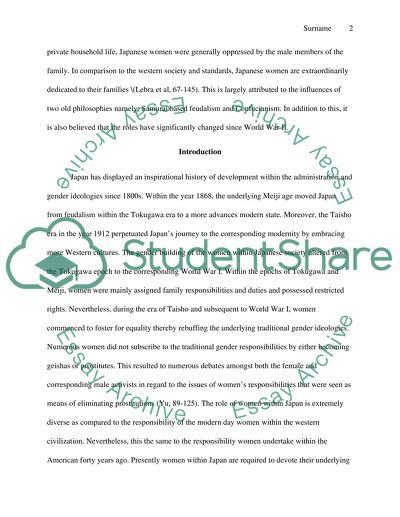Cite this document
(“Changing roles of women in japan Research Paper”, n.d.)
Retrieved from https://studentshare.org/history/1495184-changing-roles-of-women-in-japan
Retrieved from https://studentshare.org/history/1495184-changing-roles-of-women-in-japan
(Changing Roles of Women in Japan Research Paper)
https://studentshare.org/history/1495184-changing-roles-of-women-in-japan.
https://studentshare.org/history/1495184-changing-roles-of-women-in-japan.
“Changing Roles of Women in Japan Research Paper”, n.d. https://studentshare.org/history/1495184-changing-roles-of-women-in-japan.


